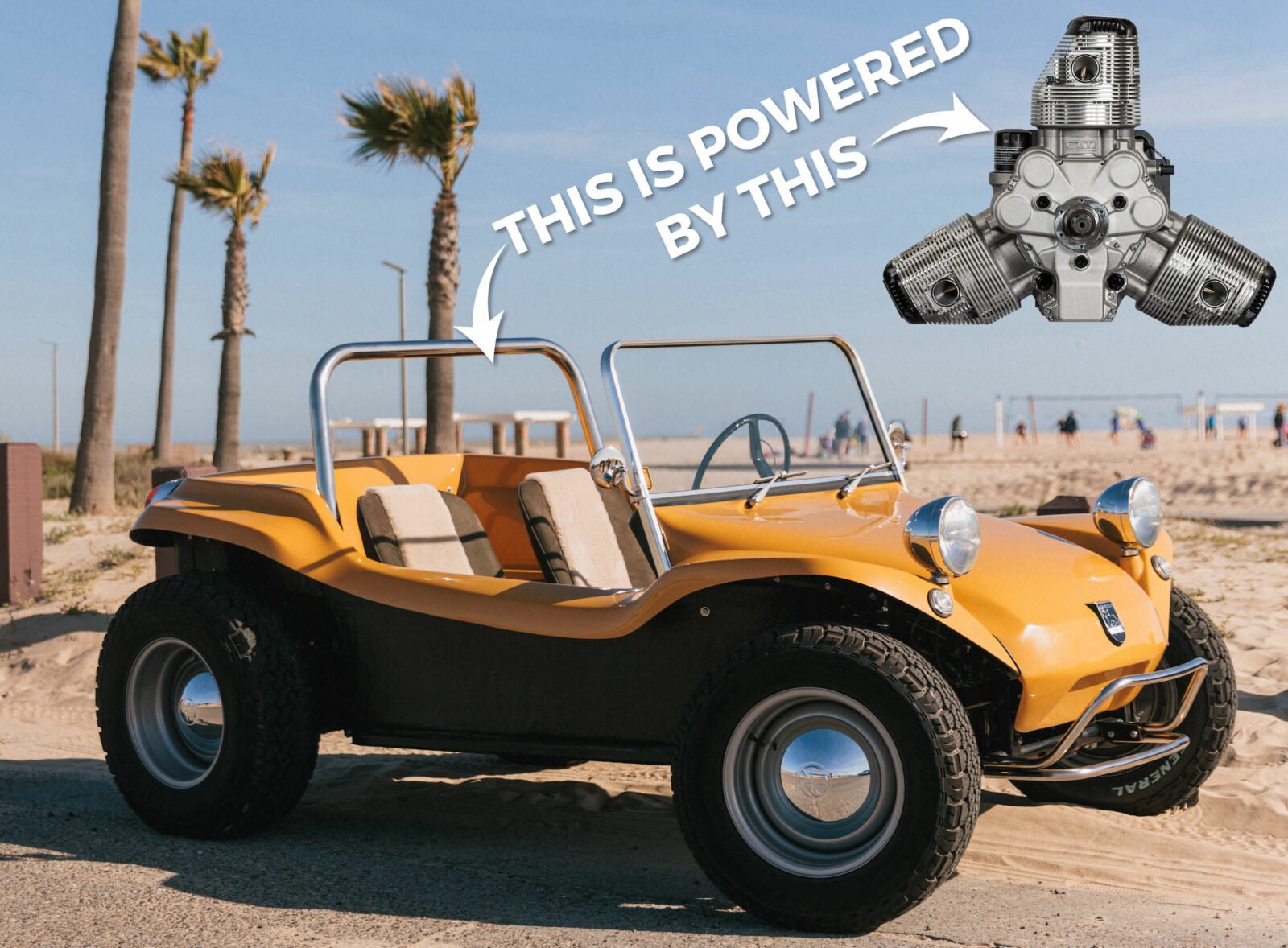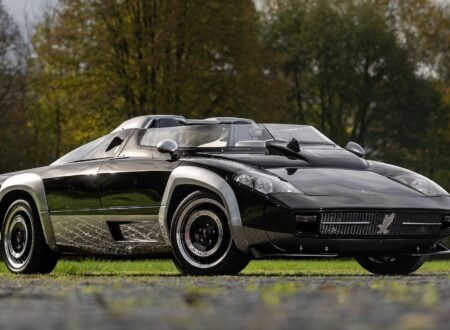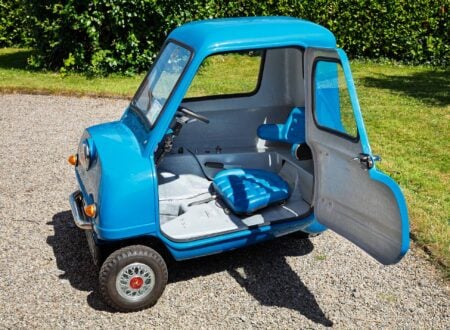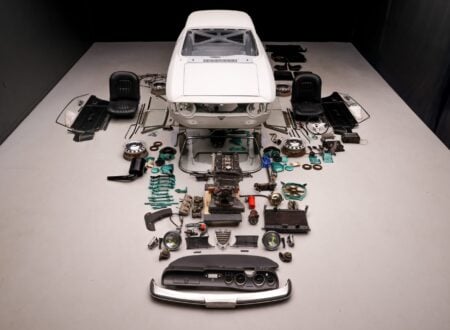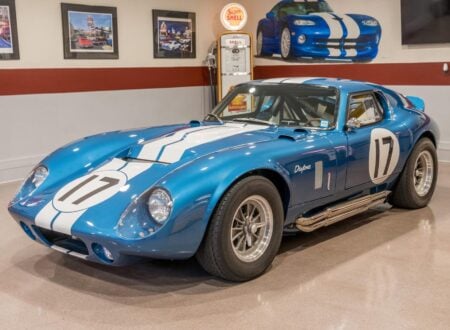The Meyers Manx beach buggy is arguably the most famous fiberglass kit car design in history, and now for the first time you can build one at home that’s powered by a 2.0 liter radial engine offering 300+% more power than the early VW Beetle-powered buggies.
The team at Meyers Manx have been working closely with Australian company Radial Motion to develop the Radial Manx you see here – interestingly this radial engine uses off-the-shelf combustion internals from an LS1 V8 to ensure easy parts availability and it’s the first kit car in history to be powered by a radial engine.
Fast Facts – The Meyers Manx Radial
- The Meyers Manx was developed by visionary engineer Bruce Meyers back in the early 1960s, he used his experience building fiberglass boats to build a fiberglass tub which was bolted onto a shortened VW Beetle platform. Bruce’s invention took off like wildfire, and created an entirely new beach buggy industry.
- A number of new buggy designs followed the original Manx including the Manx SR which offered road-biased sports car performance, the Meyers Tow’dster which was an off-road racing variant designed to be towed, and the Meyers Resorter which was developed for use a beach resort tourist vehicle.
- The vast majority of Meyers Manx vehicles were built from kits offered by the company, people could build them quickly and relatively easily in their garage or shed, and original Manx survivors are now highly collectible.
- The vehicle you see in this article is a Meyers Manx that was built by the company in California, it’s powered by the new 3-cylinder radial engine from Radial Motion. The company will be offering kits specific for this engine, for those who want to build their own.
The Meyers Manx: A History Speedrun
When Bruce Meyers designed and built the Meyers Manx he couldn’t have known that it would become one of the most recognizable cars of the century, and almost certainly the most famous car design that didn’t come from a large manufacturer.
Above Video: This is raw footage of the first radial-engine powered Meyers Manx being tested on a beach in Australia – the sound of the 3-cylinder radial is unlike anything else.
Fiberglass bodied kit cars had first appeared in the late 1940s and into the early 1950s, they offered a way for working class people to build sports cars, they just had to buy a suitable secondhand donor vehicle, remove the heavy steel body, add the lightweight fiberglass body, and then apply whatever performance tweaks they wanted.
What Bruce Meyers did was take this general concept and apply it to the VW Beetle platform to create one of the most capable off-road racing buggies of the era. His unique body design allowed the fitment of larger wheels and tires and longer travel suspension, and the whole package was so lightweight it was able to cover ground at significant speed.
The racing prowess of the car became a global news story when a Manx won the inaugural 1967 Mexican 1000 (the predecessor of the modern Baja 1000), beating a packed field of motorcycles, trucks, 4x4s, and modified cars.
Unlike many of its fiberglass kit car contemporaries the Meyers Manx is not a replica of something else, it was developed from a blank slate with this design and it’s 100% authentic. This may be why the values of the Manx on the secondhand market tend to remain strong over time – unlike replica kit cars.
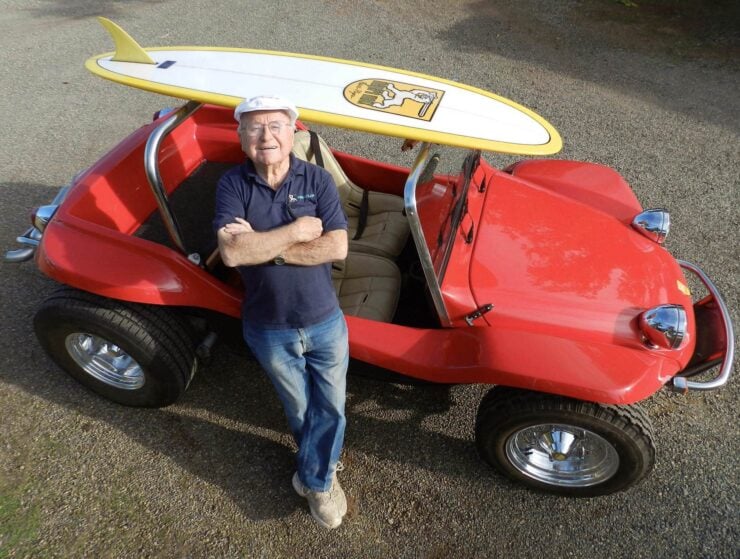

Sadly the replica car industry would set its sights on the Meyers Manx, cheap copies were made by illegitimate companies across the USA. This ate significantly into the business of Bruce Meyers company and it ended up closing down.
Thankfully this wasn’t the end of the tale – in the year 2000 the company was revived and it began selling authentic Meyers Manx kits once again with Bruce at the helm. Bruce died in 2021 at the age of 94 but not before he sold the company to a carefully handpicked successor. The company is now offering classic Meyers Manx kits, as well as the first ever production Meyers Manx electric vehicle, and the first Manx with a radial engine.
The Radial Motion Engine
The three-cylinder radial engine developed by the Australian engineering team at Radial Motion is unique in that it’s caused a wave of sustained excitement in both the aircraft world and the automotive world – as the engine can be used to power either planes or cars with only minor changes.
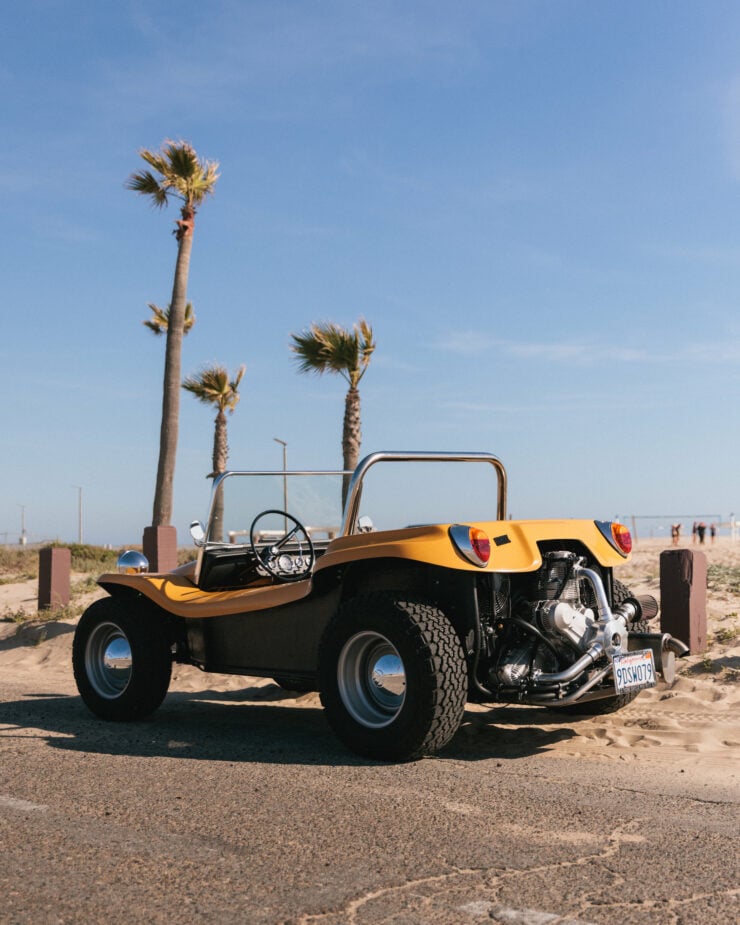

The team behind the engine originally set out to develop it as an aircraft engine, however they tested it by fitting it into a car – this is when they realized the engine was ideally suited to use in lightweight sports cars. We previously featured the Porsche 356 that’s powered by a Radial Motion engine, it’s also been fitted to a Beetle, a Kombi van, and now a Meyers Manx.
Aircraft engines are famously expensive to buy and maintain, so the engineering brief at Radial Motion was to use as many tried-and-tested off the shelf components as possible to reduce development time, cost, and complexity. This also means that spare parts are simple to source and cheap to buy.
Each Radial Motion 2.0 liter engine uses the combustion internals from a General Motors LS1 V8, which are under far less stress than they are in a performance V8 application. All three connecting rods share a common crank pin, the engine uses pushrods to actuate two valves per cylinder, and unlike many aircraft engines this one uses regular unleaded gasoline.
Radial Motion are currently experimenting with various versions of the three-cylinder radial design including forced induction, hybrid, and diesel variants, as well as additional displacements above the current 2.0 liter level. In standard 2.0 liter naturally aspirated form it produces 130 bhp and approximately 130 lb ft of torque, with a remarkably flat power curve that makes it well suited to both aero and automotive applications.
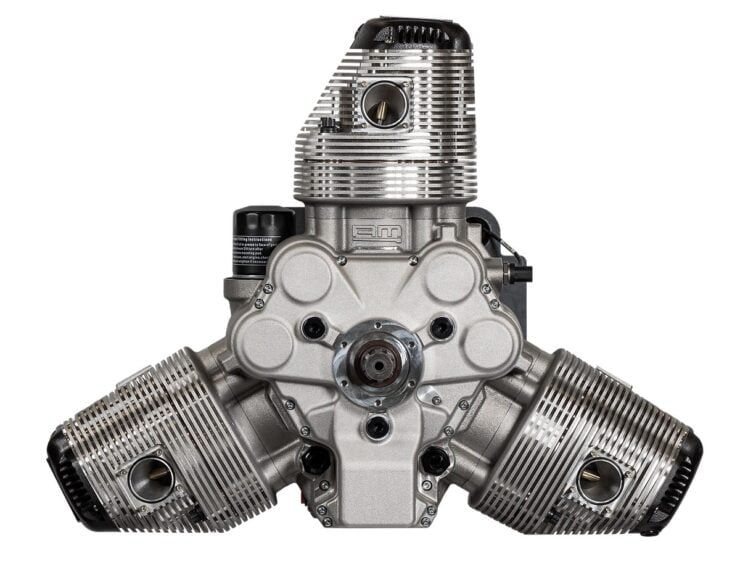

The original VW Beetle engine typically produced between 30-36 bhp depending on variant and displacement (with some later engines making as much as 60 bhp), so 130 bhp is a major step up over what most 1960s-era Meyers Manx builds were producing, approximately 3x more in fact.
The Meyers Manx Radial Shown Here
They radial engine-powered Meyers Manx you see here was built by the team at Meyers Manx in California in collaboration with Radial Motion in Australia.
The plan was to get this prototype running to see how the engine would perform, initial testing is now complete and the engine has performed so well that it will now be possible to order your Manx in a specification ready to accommodate a Radial Motion engine.
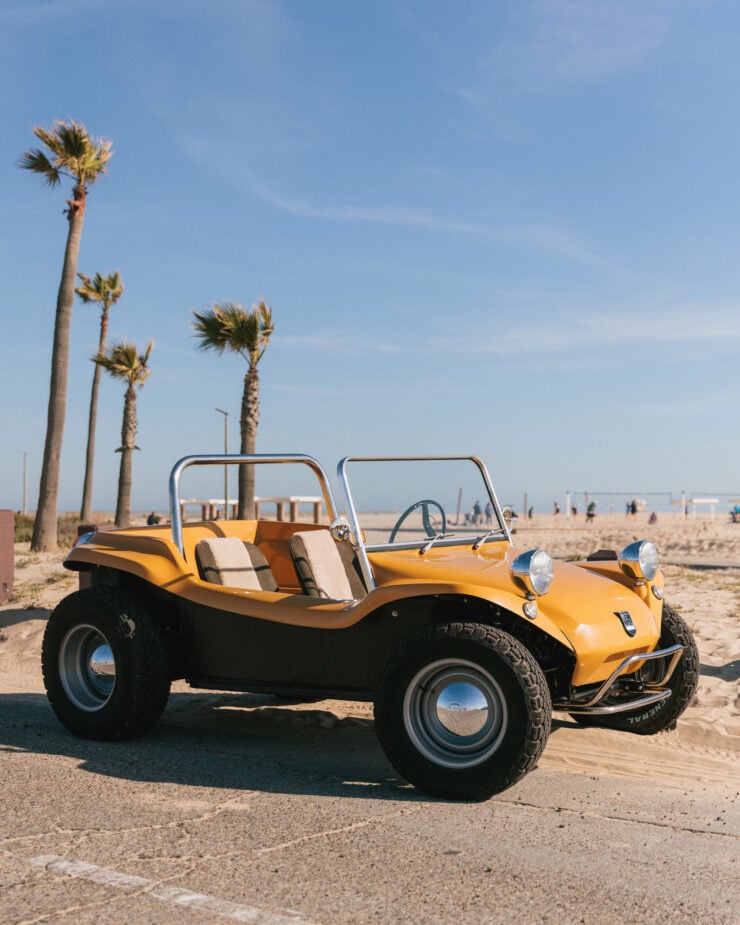

A kit built production version of the car will be offered, making this the first production car in history that can be ordered from the factory with a radial engine.
The low weight of the engine as well as its compact size makes it ideal, as it reduces the weight on the back of the vehicle without compromising ground clearance.
Interestingly the engine is mated to a standard 4-speed VW Beetle manual transmission, this further simplifies things as the drivetrain behind the engine can be built and maintained with off-the-shelf parts.
Meyers Manx is now taking orders for the Radial Motion 3-cylinder radial, standard VW Beetle, and other powertrain versions of the remastered buggy kits, and you can visit their website here to read more or send them an inquiry.
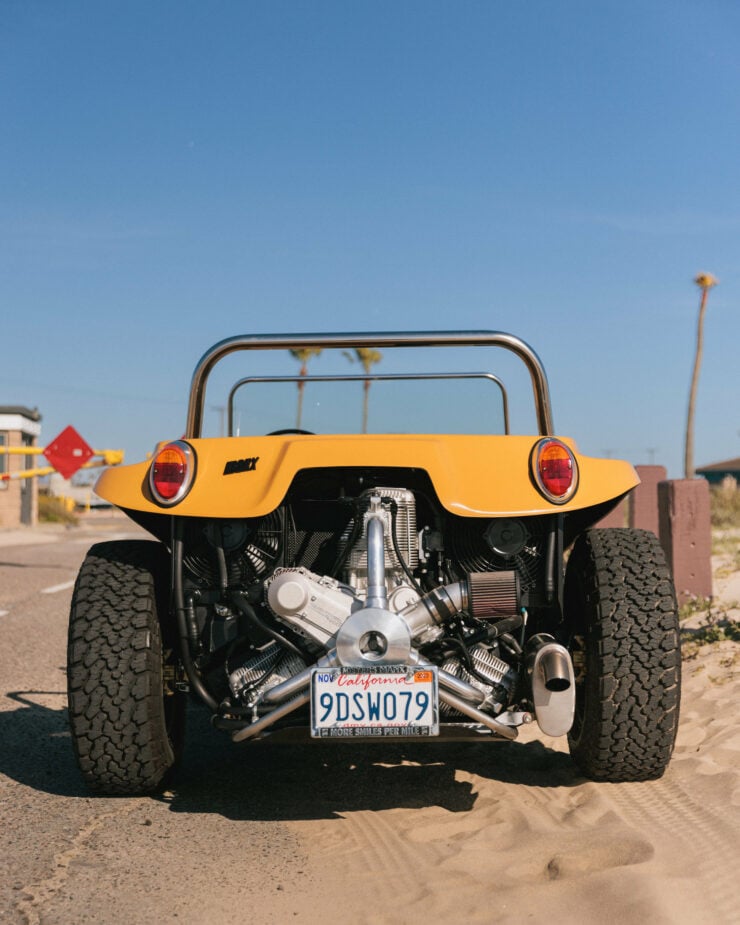
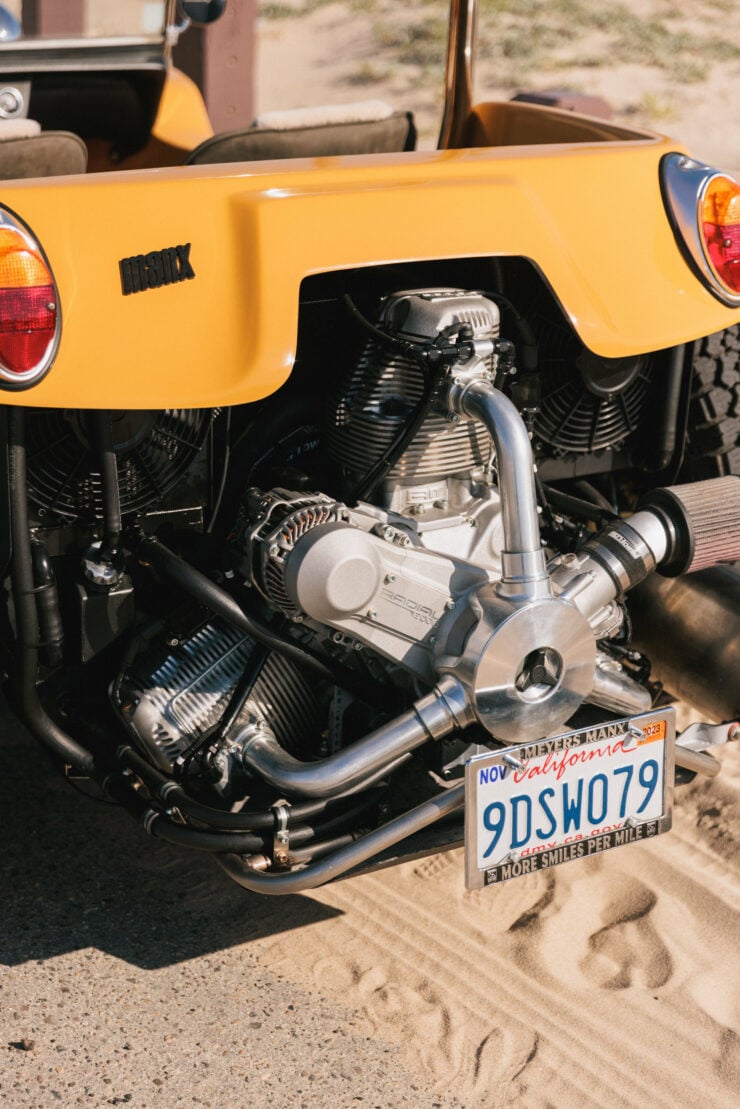
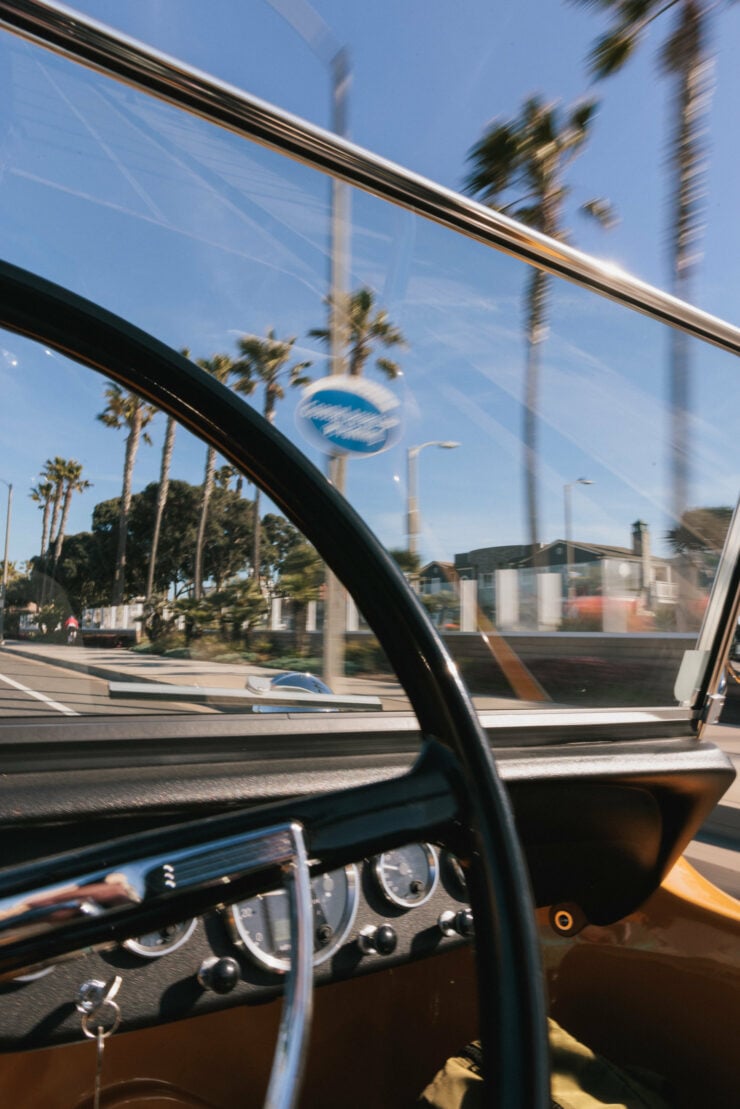

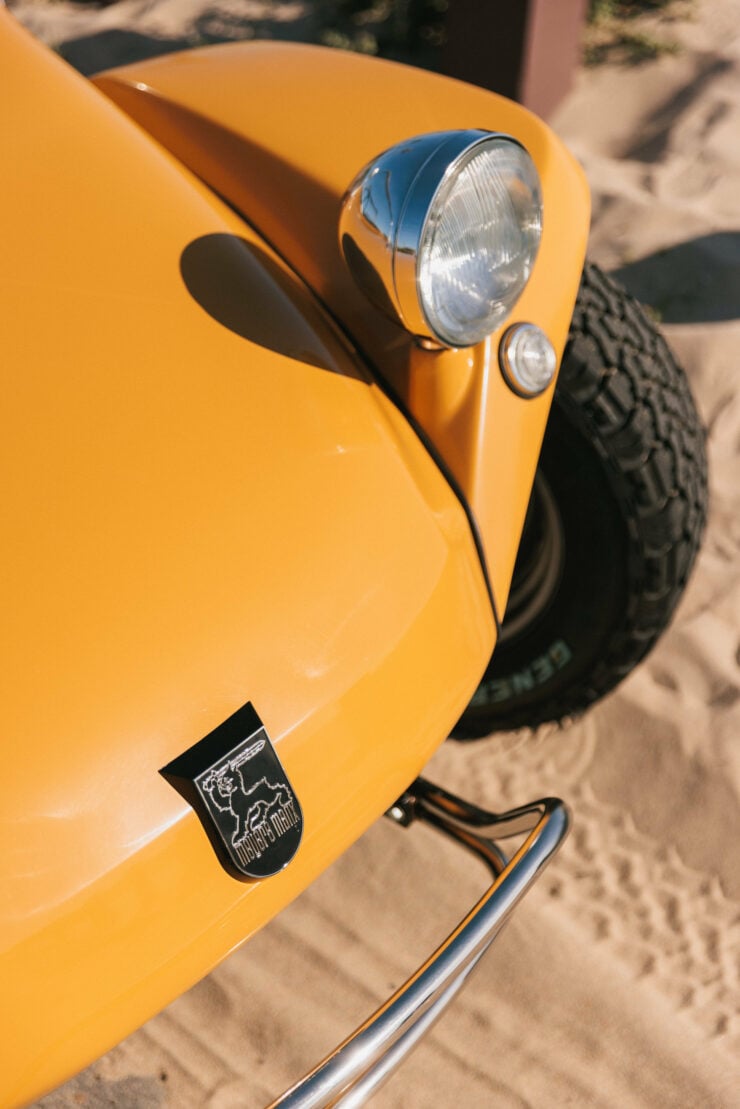
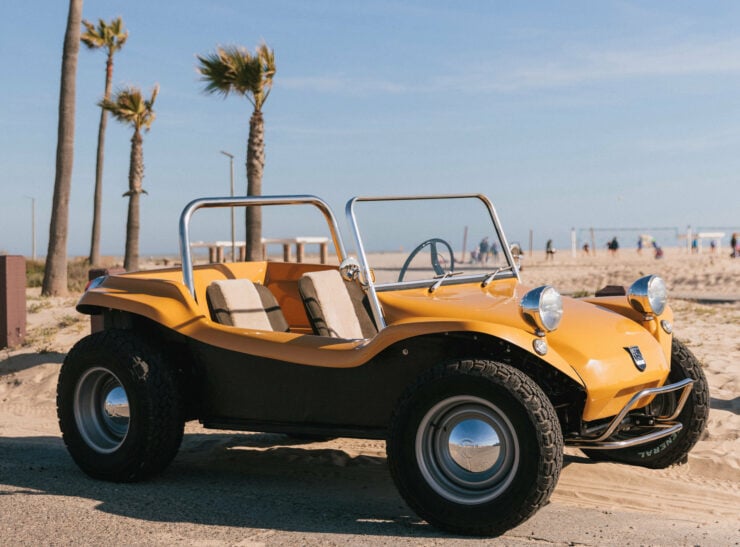



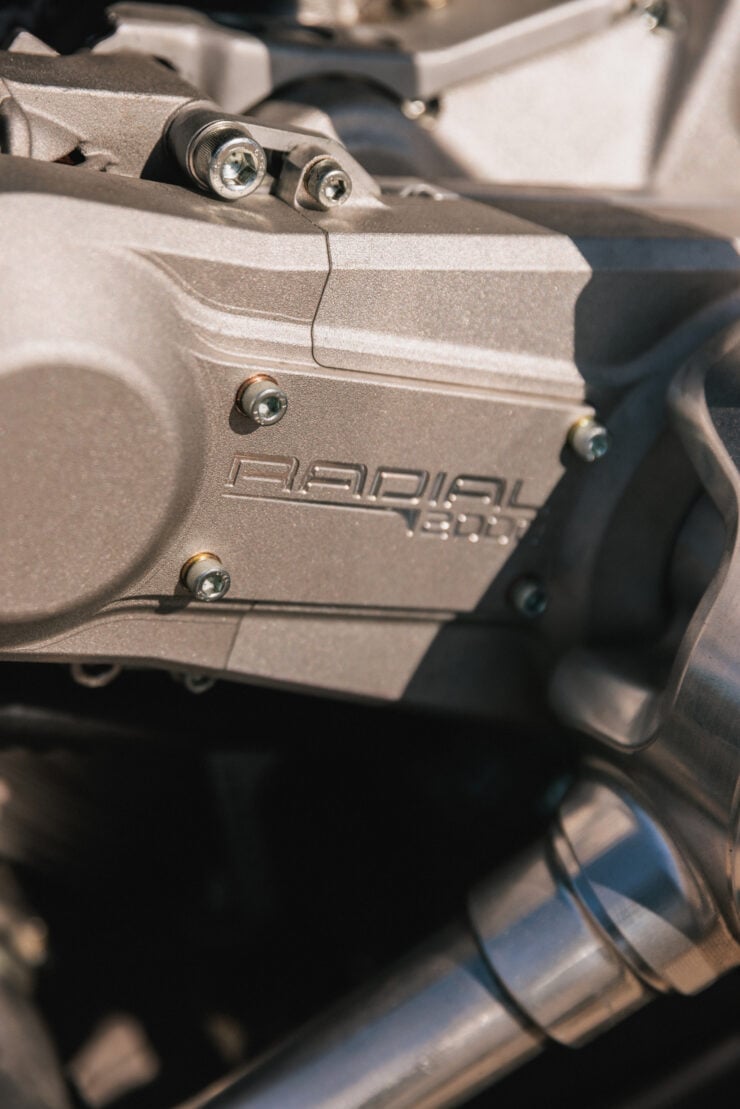
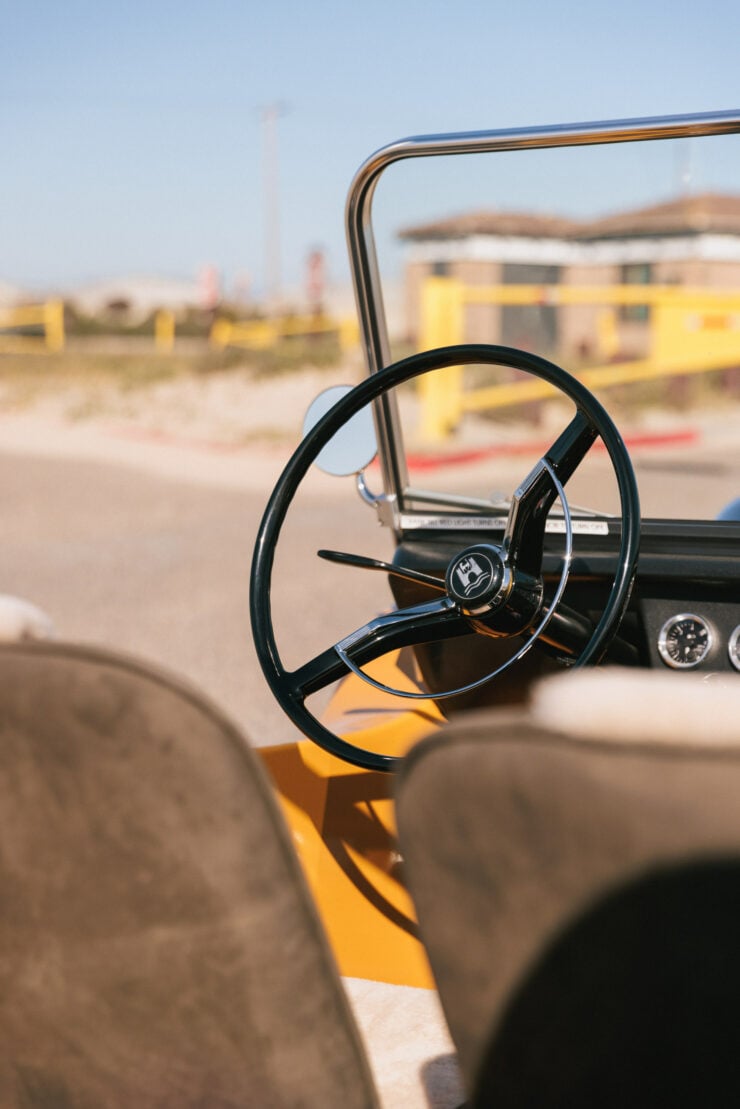
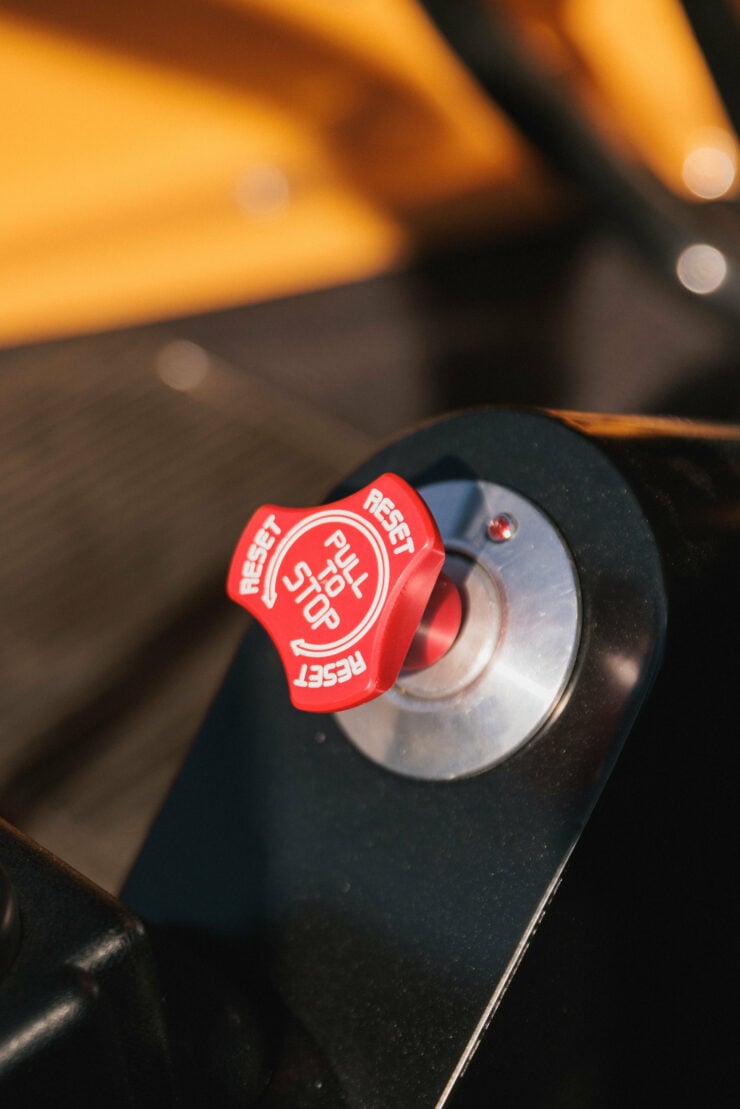
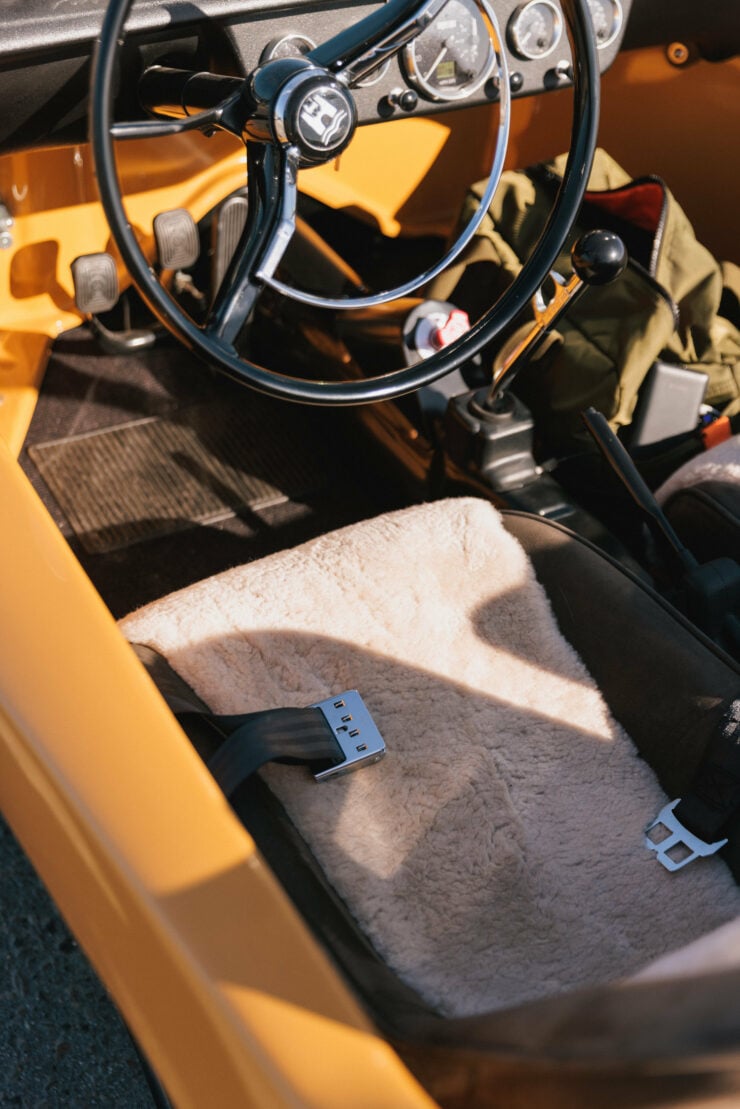
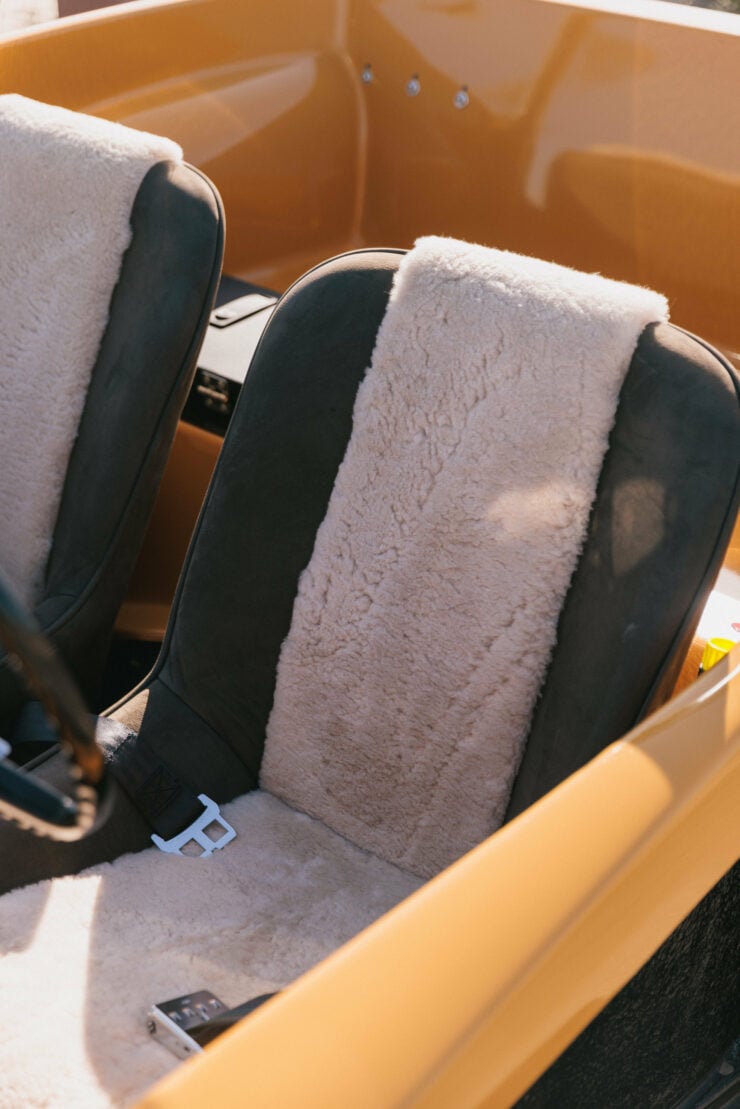
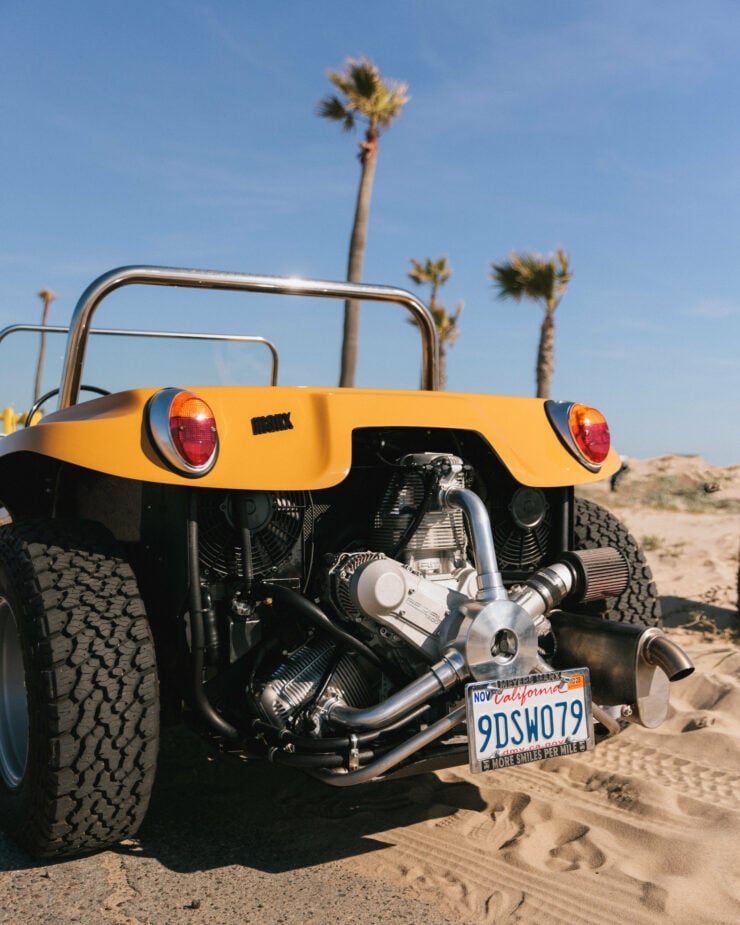
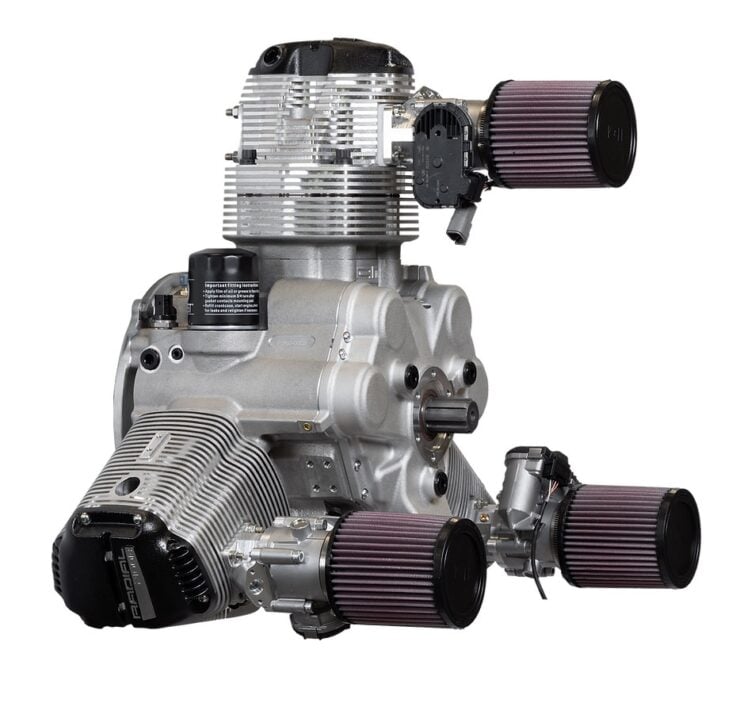
Images courtesy of Hagop Kalaidjian + Meyers Manx + Radial Motion

